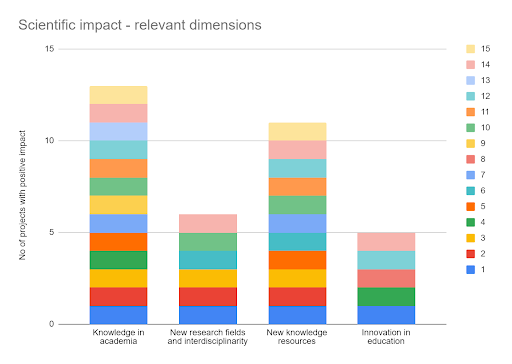By Annelli Janssen – DRIFT
One might wonder if citizen science amounts to ‘real science’. How can a group of untrained volunteers do something that academics have studied so hard for? ACTION proved the sceptics wrong: all pilots in ACTION’s accelerator program have achieved scientific impact, see figure 1.

Most of the scientific impact can be observed in the more classical scientific dimension: knowledge in academia. In total, projects gathered more than 108.000 datapoints, and produced 15 scientific articles, and 64 non-scientific publications.
Many projects also developed new knowledge resources. The project Water Sentinels, for example, worked closely with local communities. One of the project’s strengths is to provide access to their ecological traditional knowledge and local knowledge. This was achieved by training local people to perform water sampling, and including them in the sampling design decisions.
A good number of projects created new research fields or were highly interdisciplinary. Open Soil Atlas, for example, is strongly interdisciplinary. The project combines insights from soil science with anthropological and social aspects (engagement and empowerment of citizens, informal education, community building).
Last, some projects brought innovation in education. Walk Up Aniene, a citizen science project in Rome, developed and provided blended training on citizen science and data collection to citizens which is not at all a traditional nor widespread activity in the area.
All in all, all projects had good scientific impact in a relatively short amount of time. For more information about ACTION’s impact, stay tuned for our deliverable D6.4: impact assessment report V2.
